Are you ready to explore the fantastic world of fibre? If you’re not already a fibre fan, trust me, by the end of this post, you’ll be singing its praises. Fibre is an essential part of our diet, but it often doesn’t get the spotlight it deserves. So, I’m here to change that and help you understand the health benefits of fibre and why fibre should be your new best friend.
What is Fibre?
Before we dive deeper into the world of fibre, let’s take a step back and understand what it is. Fibre, also known as dietary fibre, is a type of carbohydrate found in plant-based foods that our bodies can’t fully digest or absorb. Interestingly, unlike other carbs that are broken down and absorbed by our bodies, fibre passes through our digestive system mostly intact.
In case you didn’t know, fibre comes in two fantastic forms: soluble and insoluble. Each type plays a unique role in keeping us healthy and feeling our best. From improving digestion to lowering cholesterol and even helping with weight management, fibre is a true all-star in the world of nutrition.
But, I understand that embracing a fibre-rich lifestyle can be a bit overwhelming at first. That’s why I’m here to break it down for you: discuss the health benefits of fibre, share tips and tricks, and even provide some tasty meal ideas to get you started. So, buckle up and get ready for a fibre-filled adventure, because it’s time to give this nutritional powerhouse the attention it deserves!
Soluble Fibre: The Digestion Helper

Soluble fibre dissolves in water, forming a gel-like substance. Importantly, it works wonders for our health, offering cholesterol management, blood sugar regulation, and weight management. Foods like oats, beans, and apples are packed with soluble fibre. Ideally, aim for around 10-25 grams daily, depending on your age and gender.
Insoluble Fibre: The Gut Cleaner
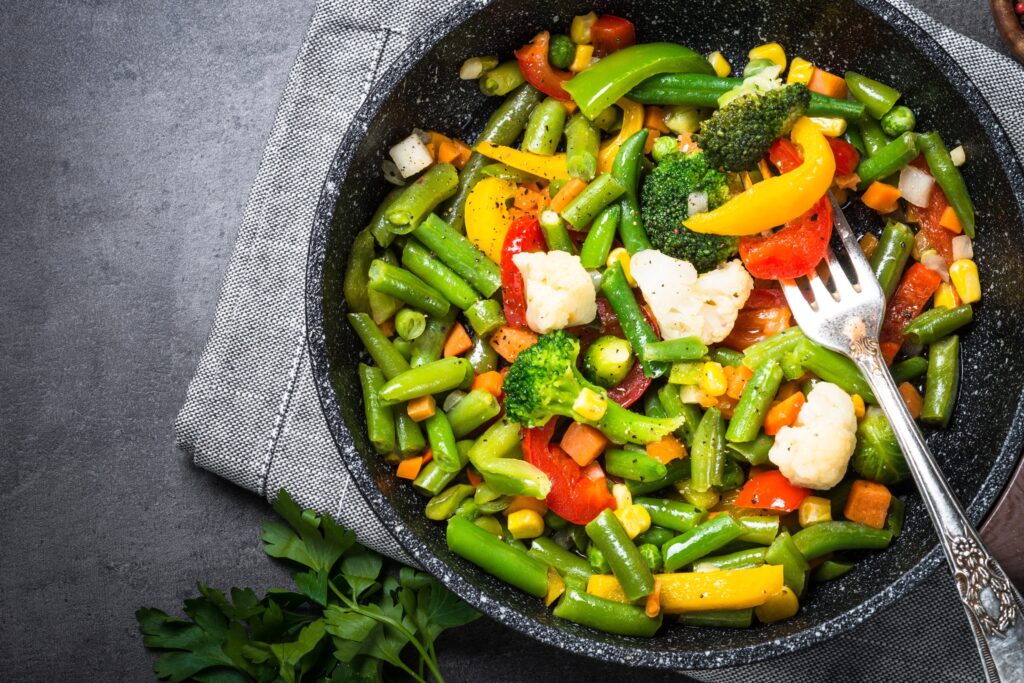 Insoluble fibre doesn’t dissolve in water, adding bulk to our stools. It promotes bowel regularity, prevents constipation, and may reduce the risk of colorectal cancer. You’ll find it in whole grains, nuts, and veggies. The recommended daily intake is about 16-30 grams, based on your age and gender.
Insoluble fibre doesn’t dissolve in water, adding bulk to our stools. It promotes bowel regularity, prevents constipation, and may reduce the risk of colorectal cancer. You’ll find it in whole grains, nuts, and veggies. The recommended daily intake is about 16-30 grams, based on your age and gender.
Balancing Fibre Intake: Tips and Tricks
- Gradually increasing fibre consumption: Hey, slow and steady wins the race, right? Start by adding a little extra fibre to your meals each day, and you’ll notice your body adjusting more comfortably. No need to rush; let your digestive system adapt at its own pace.
- Importance of hydration: Water and fibre go hand in hand! Drinking plenty of fluids helps fibre do its job effectively. Aim for at least 8 cups of water a day, or more if you’re active. Importantly, don’t forget your trusty water bottle while you’re upping your fibre game!
- Fibre supplements: pros and cons Sometimes, supplements can be a helpful addition to your fibre intake, especially if you’re struggling to get enough from whole foods.
Here’s are some common fibre supplements, along with their pros and cons:
- Psyllium husk:
Pros: Derived from the seeds of the Plantago ovata plant, psyllium husk is a popular soluble fibre supplement known for its natural laxative properties. It can help with constipation, diarrhoea, and lowering cholesterol levels.
Cons: Psyllium husk can cause gas, bloating, or cramping in some people, especially when taken in large quantities.
- Inulin:
Pros: Inulin is a soluble fibre derived from the roots of chicory plants. It acts as a prebiotic, promoting the growth of beneficial gut bacteria, and can help improve digestion and calcium absorption.
Cons: Inulin may cause gas, bloating, and stomach discomfort in some individuals, particularly when first introduced or consumed in high amounts.
Remember, fibre supplements shouldn’t replace real food, as whole foods offer a variety of nutrients and other benefits.
Creating a high-fibre meal plan:
Meal planning can be a game-changer when it comes to incorporating more fibre into your diet. Make a list of fibre-rich foods you enjoy and plan your meals around them. Experiment with new recipes, and remember, variety is the spice of life! A well-rounded, high-fibre meal plan will keep you satisfied and excited about your food choices.
By following these tips and tricks, you’ll be on your way to a balanced fibre-rich lifestyle and gains from all the health benefits of fibre. Remember, it’s all about listening to your body and making gradual changes that work for you. Happy balancing!
The Fibre-Friendly Kitchen: Recipes and Ideas
Breakfast ideas:
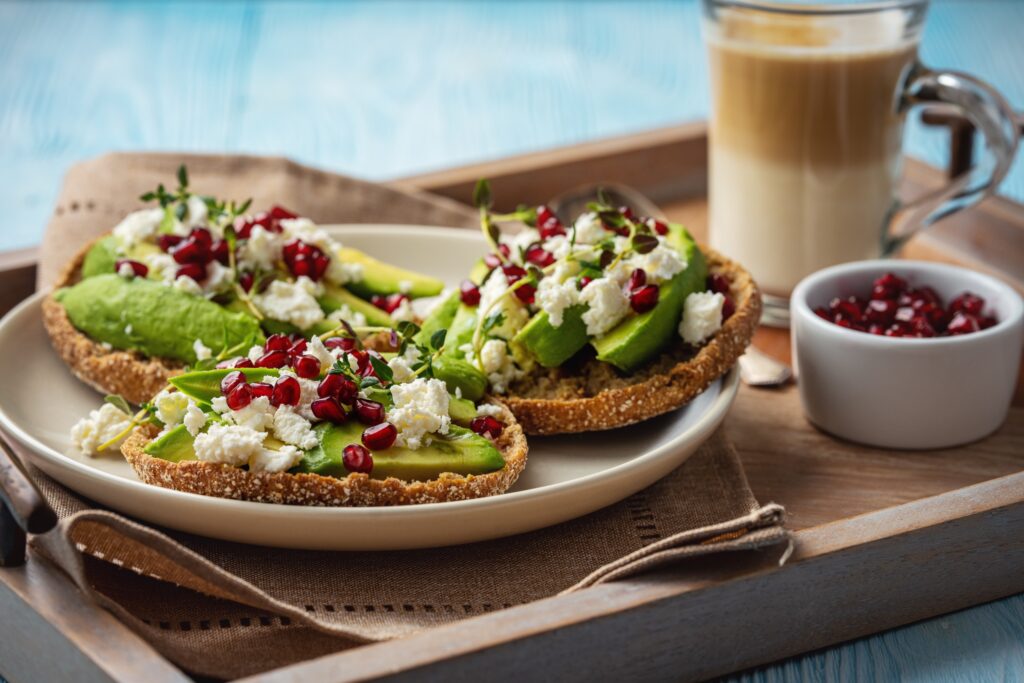
- Overnight oats with chia seeds, berries, and chopped nuts
- High-fibre smoothie with spinach, avocado, flaxseeds, and almond milk
- Whole-grain toast with smashed avocado and a sprinkle of hemp seeds
Lunch and dinner options:
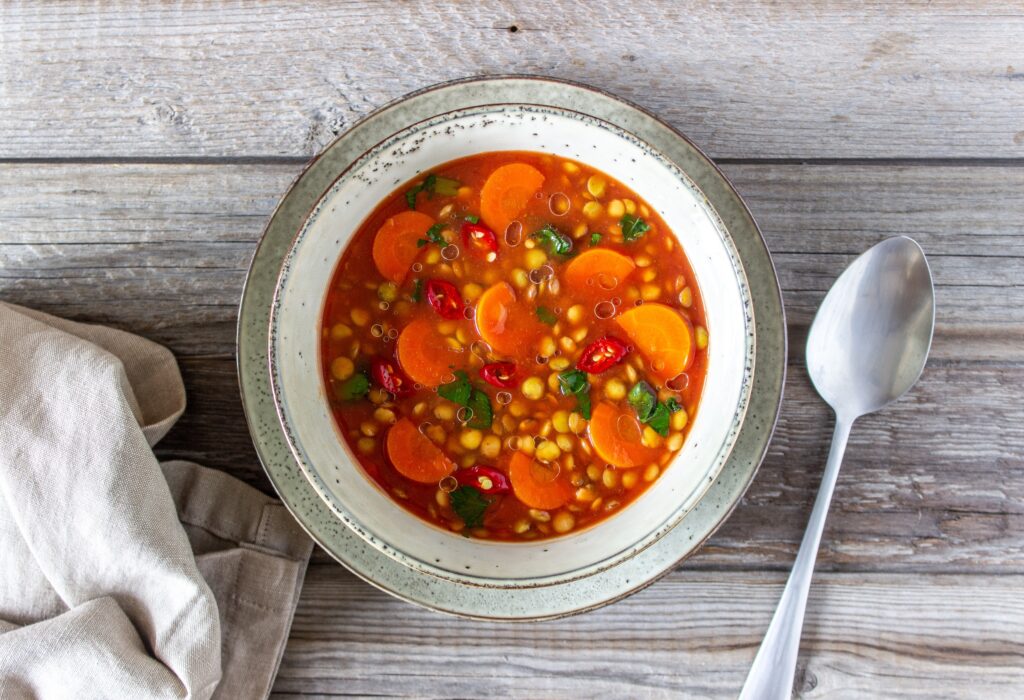
- Lentil and vegetable soup with a side of whole-grain crackers
- Grilled chicken salad with mixed greens, quinoa, and chickpeas, topped with a vinaigrette dressing
- Stuffed bell peppers with ground turkey, black beans, and brown rice, baked to perfection
Snacks and desserts:
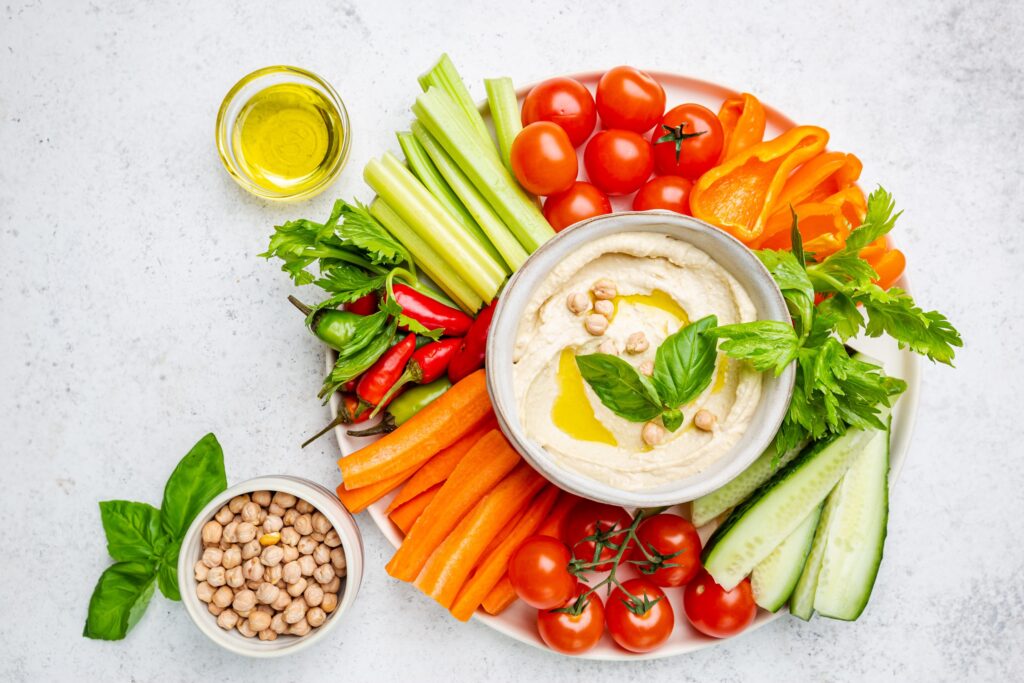
- Hummus or nut butter with vegetable sticks (carrots, bell peppers, and cucumbers)
- Greek yogurt with a mix of almonds, sunflower seeds, and pumpkin seeds
- Chia seed pudding made with unsweetened almond milk, topped with fresh fruit
Creative ways to incorporate more fibre:
- Replace white rice with quinoa or barley in your favourite dishes
- Add beans or lentils to salads, soups, and stews for a fibre boost
- Swap out regular pasta for whole-grain or legume-based alternatives
Enjoy experimenting with these delicious and fibre-packed meal and snack ideas. Remember, it’s all about finding the balance between taste and nutrition, so get creative and have fun with it!
Common Myths and Misconceptions About Fibre
Let’s face it, we’ve all heard some weird and wonderful things about fibre. But don’t worry, I’m here to set the record straight and bust some common myths and misconceptions. Let’s get debunking!
- Fibre is just for older people:
Nope, not true! Fibre is essential for everyone, regardless of age. Kids, adults, and seniors all benefit from a fibre-rich diet. In fact, starting with a fibre-rich diet early in life can help develop healthy habits that last a lifetime.
- All fibre causes gas and bloating:
While it’s true that some people may experience gas or bloating when increasing their fibre intake, this is usually a temporary issue. As your body adjusts to the increased fibre, these symptoms typically subside. Just remember to increase your intake gradually and stay hydrated.
- Fibre will make me feel too full:
While fibre does help you feel full and satisfied, that’s actually a good thing! Consuming fibre-rich foods can help with portion control and prevent overeating. Plus, the feeling of fullness from fibre-rich meals is usually more comfortable and less bloated compared to high-fat or high-sugar meals.
- All fibre sources are equal:
Not all fibre sources are created equal. Different foods contain varying amounts of soluble and insoluble fibre, and both types offer unique benefits. Aim for a balanced mix of fibre sources to reap the full range of benefits.
- I get enough fibre from my daily fruits and veggies:
While fruits and vegetables are great sources of fibre, most people still don’t get enough. To meet your daily fibre needs, make sure to also include whole grains, legumes, nuts, and seeds in your diet.
So, now that I’ve cleared up some common misconceptions, you can confidently embrace a fibre-rich lifestyle without any doubts or concerns. Remember, the key is to gradually increase your fibre intake and listen to your body along the way. You’ve got this!
Health Benefits of Fibre
Fibre is a nutritional powerhouse, offering a wealth of long-term health benefits. Let’s dive into some of the most significant advantages of incorporating fibre into your daily diet:
- Reduced risk of heart disease:
Fibre, particularly soluble fibre, helps lower bad cholesterol (LDL) levels, reducing the risk of heart disease. It also helps regulate blood pressure, contributing to overall cardiovascular health.
- Improved blood sugar control:
Soluble fibre slows down the absorption of sugar in the bloodstream, which helps maintain stable blood sugar levels. This is particularly beneficial for people with prediabetes or those at risk of developing Type 2 diabetes.
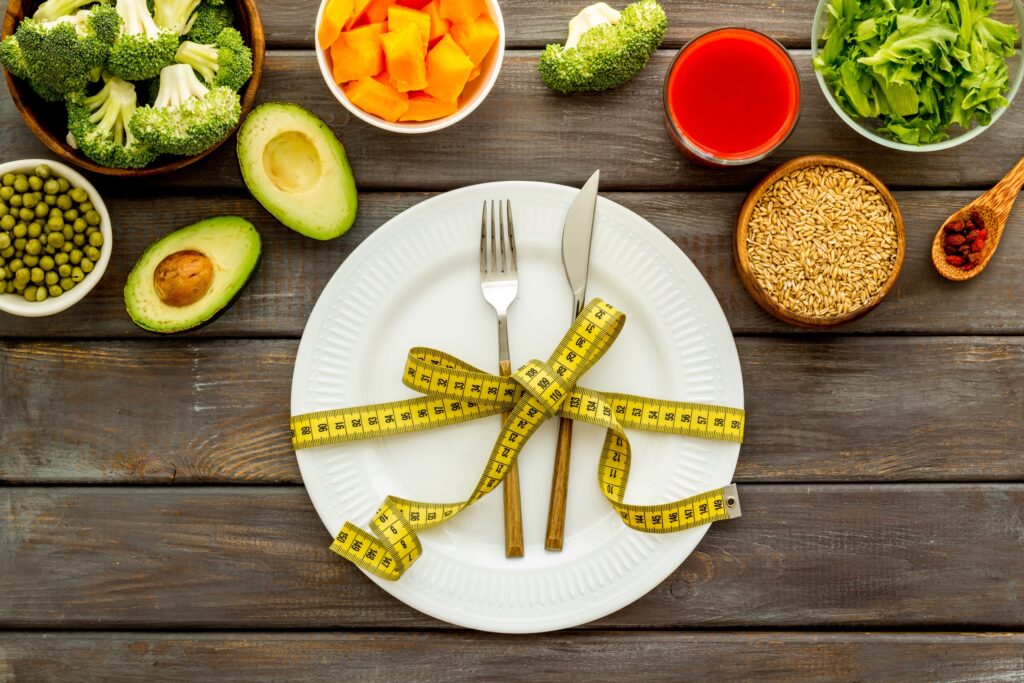
- Enhanced weight management:
Fibre-rich foods are more filling, which means you’re likely to eat less and stay satisfied longer. This can help with portion control and support weight loss or maintenance efforts.
- Better digestive health:
Insoluble fibre adds bulk to your stools, promoting regular bowel movements and preventing constipation. Soluble fibre, on the other hand, feeds the good bacteria in your gut, supporting a healthy gut microbiome.
- Reduced risk of certain cancers:
A high-fibre diet has been linked to a lower risk of developing colorectal cancer. It is also believed that fibre may help reduce the risk of breast and ovarian cancers, although more research is needed in this area.
- Strengthened immune system:
A healthy gut microbiome, supported by a fibre-rich diet, is essential for a strong immune system. The good bacteria in our gut help fight off harmful pathogens and support overall immune function.
- Prevention of diverticular disease:
Consuming adequate fibre can help prevent the development of diverticula, small pouches that can form in the colon. This reduces the risk of diverticulitis, a painful inflammation of these pouches.
Therefore, by embracing a fibre-rich diet, you’re investing in your long-term health and well-being. With so many benefits, it’s easy to see why fibre is a vital part of any balanced and nutritious lifestyle.
How Fibre Benefits Gut Microbiota
Have you ever wondered what’s going on inside your gut? It turns out, there’s a whole community of microorganisms living there, called the gut microbiota. These tiny critters play a huge role in our overall health, and guess what? Fibre is their favourite food!

Here’s a closer look at how fibre benefits our gut microbiota:
- Feeding the good bacteria:
When we eat fibre, especially soluble fibre, it reaches our large intestine mostly undigested. There, it becomes a delicious feast for the good bacteria. These beneficial bacteria break down the fibre, producing short-chain fatty acids as a by-product.
- Boosting short-chain fatty acids:
The short-chain fatty acids produced by our gut bacteria offer several health benefits. Basically, they help maintain the integrity of the gut lining, reduce inflammation, and even regulate our immune system. Plus, they provide energy for the cells lining our colon.
- Promoting a diverse microbiome:
A fibre-rich diet encourages a diverse gut microbiome, which is essential for overall health. Different types of fibre feed different bacteria species, so eating a variety of fibre-rich foods supports a more balanced and diverse gut environment.
- Supporting digestion and nutrient absorption:
A healthy gut microbiome not only breaks down fibre but also helps with the digestion of other nutrients. This means that by feeding our gut bacteria with fibre, we’re supporting the overall digestive process and ensuring our bodies absorb the nutrients they need.
- Strengthening the gut-brain axis:
Our gut microbiota and brain communicate constantly through the gut-brain axis. A fibre-rich diet that promotes a healthy gut microbiome can help maintain a strong connection between the gut and brain, potentially influencing our mood, cognitive function, and mental health.
So, by feeding your gut bacteria a fibre-rich diet, you’re actually taking care of your entire body. It’s incredible how something as simple as adding more fibre to our meals can have such a profound impact on our well-being. Your gut will thank you, and so will the rest of your body!
The Bottom Line
In conclusion, fibre is a way to unlock better health. By now, you should have a deeper understanding of the importance of fibre in your diet and how it can support your overall health and well-being.
We’ve explored delicious fibre-rich meal ideas, discovered the health benefits of fibre and learned how to balance our fibre intake to keep our gut microbiota happy. Remember, the key is to start slow, stay hydrated, and enjoy a variety of fibre-rich foods to get the full range of benefits.
As you continue to incorporate more fibre into your meals, you’ll find it becomes second nature, and you’ll wonder how you ever lived without it. So, go forth and embrace a fibre-rich lifestyle, knowing you’re making a positive impact on your health, one bite at a time.
Here’s to a happier, healthier, and more fibre-filled life!
SHARE

Madhavi Shilpi
Nutritionist
Prediabetes Coach
Related
Why Early Diagnosis of Prediabetes Is Key to Preventing Type 2 Diabetes
Introduction Imagine this: you’re feeling pretty healthy. Maybe you’re a…
Weight Loss: the Diet vs Exercise debate
When most people think of weight loss, they immediately imagine themselves…
3 Weight Loss Myths
Losing weight is a common goal for many people, but with so much information…
Why do diets fail?
Why does ‘lose 5 kg in 5 weeks’ turn into a mirage each time you chase it? Why…
What is Prediabetes?
Have you been diagnosed with Prediabetes? Are you wondering what it actually…
32.8% of India Has Prediabetes — Are You Ignoring the Early Signs?
Introduction India is facing a serious health crisis: 32.8% of the…






